Jinhu Zhang
Morphing median fin enhances untethered bionic robotic tuna's linear acceleration and turning maneuverability
Jul 26, 2024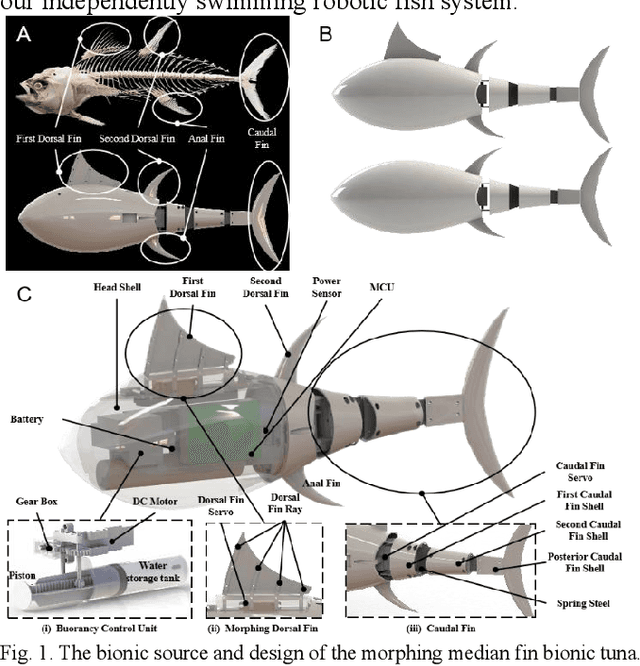
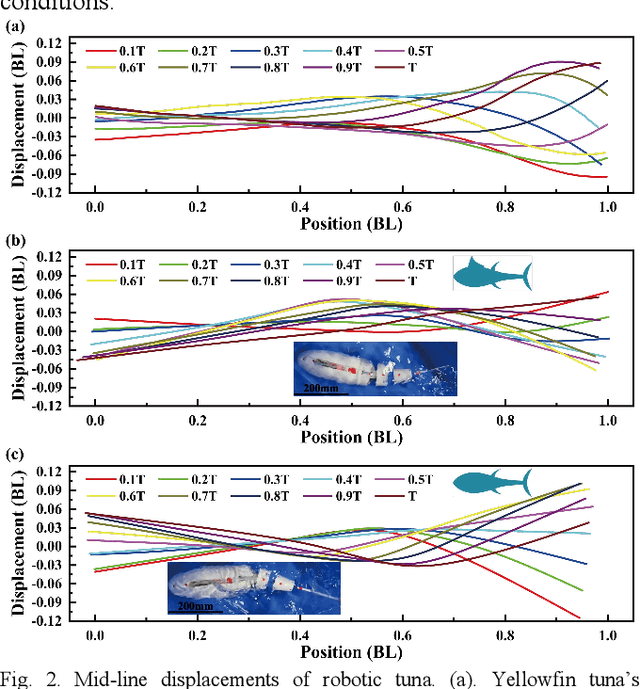
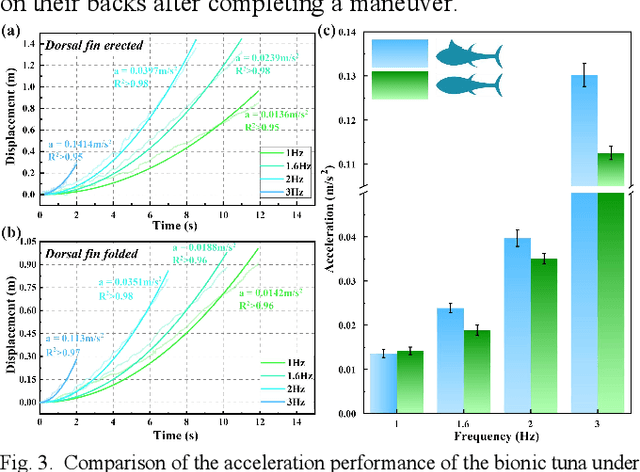
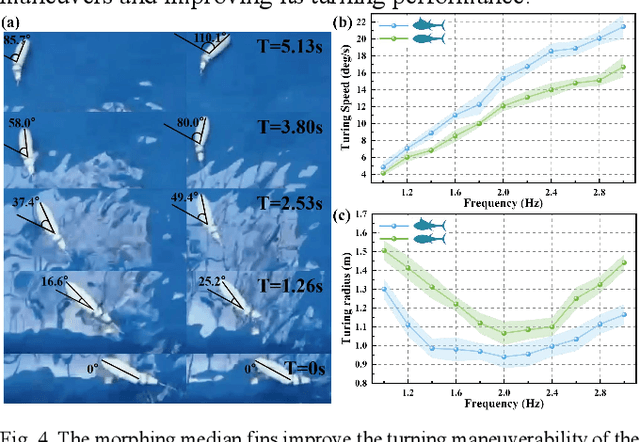
Abstract:Median fins of fish-like swimmers play a crucial role in linear acceleration and maneuvering processes. However, few research focused on untethered robotic fish experiments. Imitating the behaviour of real tuna, we developed a free-swimming bionic tuna with a foldable dorsal fin. The erection of dorsal fin, at proper conditions, can reduce head heave by 50%, enhance linear acceleration by 15.7%, increase turning angular velocity by 32.78%, and turning radius decreasing by 33.13%. Conversely, erecting the dorsal fin increases the wetted surface area, resulting in decreased maximum speed and efficiency during steady swimming phase. This finding partially explains why tuna erect their median fins during maneuvers or acceleration and fold them afterward to reduce drag. In addition, we verified that folding the median fins after acceleration does not significantly affect locomotion efficiency. This study supports the application of morphing median fins in undulating underwater robots and helps to further understand the impact of median fins on fish locomotion.
How Biomimetic Morphing Dorsal Fin Affects the Swimming Performance of a Free-swimming Tuna Robot
Oct 19, 2023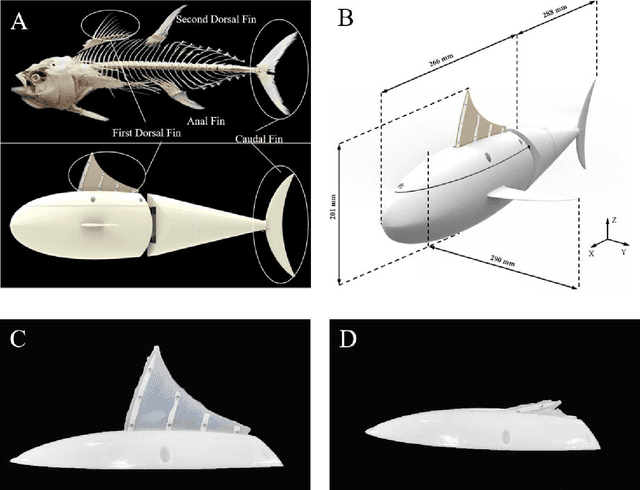
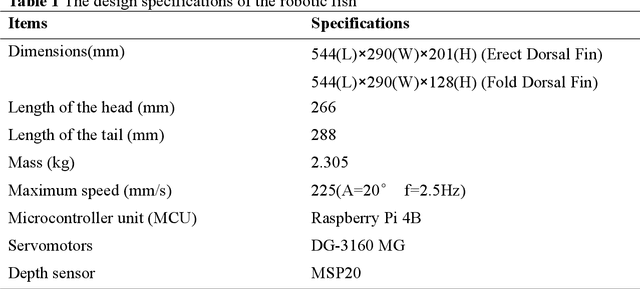
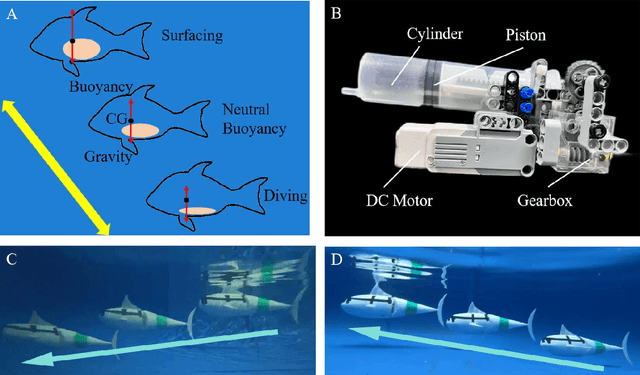

Abstract:It is well known that tuna fish in the ocean can dynamically morph their median fins to achieve optimal hydrodynamic performance, e.g. linear acceleration and maneuverability. In this study, based on the previous studies about the median fin's hydrodynamic effects focusing on tethered conditions, we continue to explore the hydrodynamic function of tuna morphing dorsal fin in free swimming conditions for better approaching real-life situations.Here, we developed a tuna-inspired robotic fish platform that can swim independently in three dimensions, equipped with a biomimetic morphing dorsal fin magnetically attached to the robotic fish. Based on the free-swimming robotic fish platform, we investigated how the erected dorsal fin affects the speed, cost of transport (COT), and robotic fish's yaw angle at different frequencies and amplitudes. The erected dorsal fin plays a positive role in improving the yaw stability of robotic fish. However, it shows little influence on the speed and COT in our test. This remains to be further investigated in the future.
 Add to Chrome
Add to Chrome Add to Firefox
Add to Firefox Add to Edge
Add to Edge